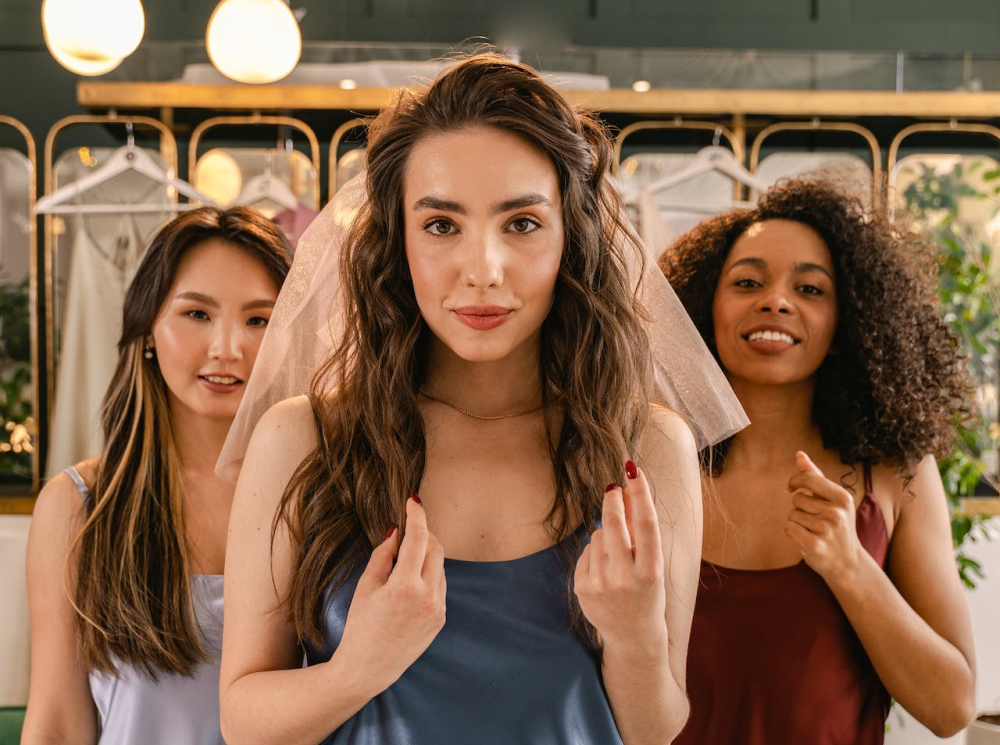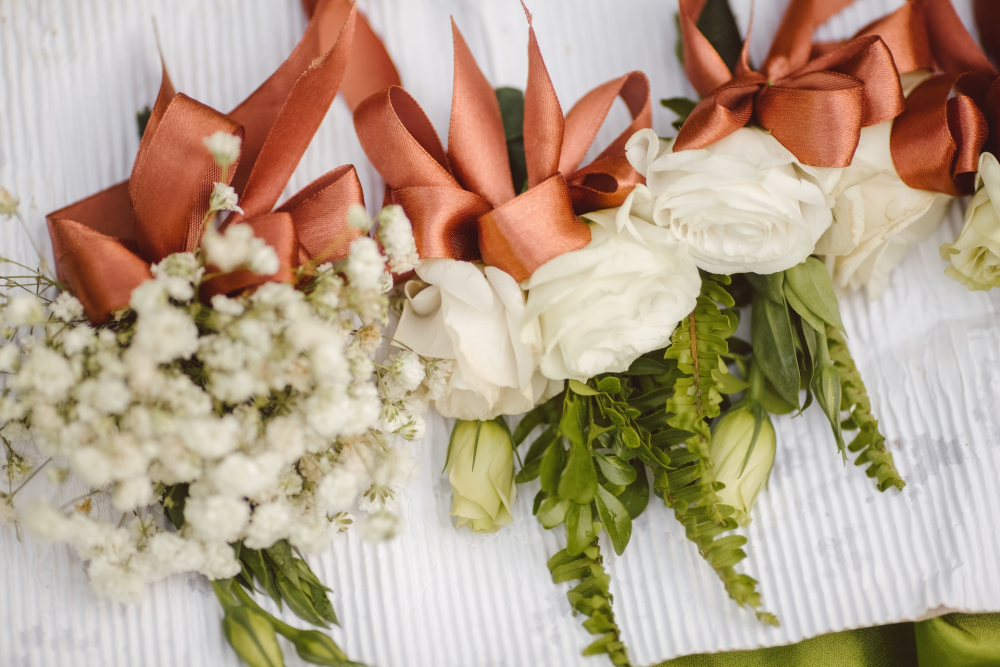
How to Plan an Inclusive Environment at Hen Dos
Buckle up, because we’re diving headfirst into the wild, whimsical world of hen dos, but with a twist that’s overdue: Inclusive environment at hen dos. It’s 2023, and the era where hen dos were exclusive, stereotype-driven, and borderline cringe is in our rear-view mirror.
We’re steering this party bus into a future where every hen, from your LGBTQ+ pals to your pregnant friends, is not just invited to the party but is the party!
Picture this: A themed hen do where every laugh, every game, and every heartfelt moment is crafted with every attendee in mind. A celebration that doesn’t just tolerate diversity but throws it a freaking confetti parade. We’re talking about an inclusive bash that honors not just the bride but every single individual in the room, recognizing, respecting, and reveling in their unique identities and experiences.
But how do we get there? How do we flip the script and turn a traditionally heteronormative, often exclusionary bash into a celebration that’s a safe, welcoming, and utterly epic space for all? How do we ensure that every hen in the flock feels seen, heard, and valued, ensuring that the memories crafted are cherished by each attendee?
This isn’t just about swapping out a few games or ditching the inappropriate props. It’s about redefining the hen do culture, ensuring that every giggle, every tear, and every photograph captured resonates with the collective joy of all attendees.
It’s about ensuring that the narrative isn’t just focused on the bride-to-be but celebrates the collective spirit of all her hens, each one a vital character in this blockbuster celebration.
In the upcoming sections, we’re going to dismantle the traditional hen do blueprint and reconstruct it with inclusivity as our foundation. We’re going to explore, dissect, and reimagine every aspect, from the invitations to the activities, ensuring that every hen feels like the guest of honor.
From ensuring accessibility for disabled hens to honoring the identities and experiences of LGBTQ+ attendees, we’re going to dive deep, ensuring that no hen is left on the periphery.
So, let’s embark on this journey together, crafting a guide that ensures every hen do from here on out is not just a party but a celebration of every individual in attendance. Let’s create a future where every hen do is a harmonious melody of diverse experiences, a celebration that’s not just remembered for its revelry but its unwavering commitment to inclusivity and respect.
Choose an Inclusive Venue

When planning a hen do, choose an inclusive venue that caters to the needs of all attendees. Consider the following factors:
Accessibility: Ensure the venue is accessible for everyone, including individuals with disabilities. Look for venues with ramps, lifts, and accessible facilities.
Diversity and representation: Choose a venue that embraces diversity and promotes inclusive values. Look for venues that celebrate different cultures, backgrounds, and identities.
Flexibility: Opt for a venue that offers a range of activities to cater to different interests and abilities.
Privacy: Consider the need for privacy in certain activities or discussions. Some venues may offer private areas or secluded spaces.
Comfort: Choose a venue that provides a comfortable and welcoming environment for all attendees. Consider factors such as seating arrangements, temperature control, and noise levels.
Suggestions for inclusive venues include:
A community centre or local hall that can be easily customised to meet the needs of the group.
A nature retreat with accessible trails and facilities.
An inclusive spa or wellness centre with a variety of treatments and relaxation options.
A restaurant or café that caters to diverse dietary requirements.
A boutique hotel with a range of room types and amenities to accommodate different preferences and budgets.
Ensure Accessibility
Creating an inclusive environment at Hen Dos requires ensuring accessibility for all participants. Here are key considerations for ensuring accessibility:
- Physical accessibility: To ensure accessibility, it is important to make sure that the venue is wheelchair accessible with ramps and lifts. Providing accessible bathroom facilities is essential.
- Visual accessibility: When it comes to individuals with visual impairments, it is crucial to consider their needs. Providing information in alternate formats such as braille or large print is necessary. Using high colour contrast and clear signage benefits those with low vision.
- Hearing accessibility: It is important to accommodate individuals who are deaf or hard of hearing. If necessary, provide assistive listening devices. Using sign language interpreters, captions, or visual alerts ensures effective communication.
- Dietary accessibility: Taking into account different dietary requirements and allergies when planning the menu is vital. Offering options for gluten-free, dairy-free, or vegan meals helps create a more inclusive environment.
- Communication accessibility: To ensure inclusive and accessible communication, it is important to use plain language and avoid complex terminology. Providing multiple channels for communication is also essential.
- Emotional accessibility: In order to create an inclusive and welcoming atmosphere, it is important to foster an environment that respects and values diversity. By doing so, everyone will feel included and able to participate fully.
By ensuring accessibility in these aspects, you can create an environment at Hen Dos that welcomes and includes participants of all abilities.
Consider Dietary Restrictions
The consideration of dietary restrictions is of utmost importance when planning an inclusive environment at hen dos. This ensures that everyone can fully enjoy the event without having to worry about their specific dietary needs. Here are a few key factors to take into consideration:
- Allergies: It is crucial to be mindful of common food allergies such as nuts, gluten, dairy, and shellfish. To prevent any allergic reactions, it is best to refrain from using these ingredients in any of the dishes or snacks being served.
- Vegetarian and vegan options: To accommodate guests who do not consume meat or animal products, it is essential to provide a diverse range of vegetarian and vegan dishes. This will ensure that they have ample meal choices to enjoy.
- Halal and Kosher requirements: For guests who adhere to Halal or Kosher dietary restrictions due to religious reasons, it is imperative to offer meals that align with their specific dietary guidelines.
- Gluten-free options: Considering the needs of individuals with gluten intolerance or celiac disease, it is important to offer gluten-free alternatives for snacks, desserts, and main courses. This will ensure that they can fully participate in the event without any discomfort.
Plan Activities for Everyone
Planning activities for everyone is essential in creating an inclusive atmosphere at Hen Dos. Here are some suggestions on how to achieve this:
As the organizer, it is important to organize outdoor games such as relay races, scavenger hunts, or bean bag toss. These games encourage teamwork and active participation from all guests, promoting inclusivity.
Another idea is to set up a craft area where attendees can showcase their creativity through activities like painting, jewelry making, or DIY projects. This allows everyone to express themselves and feel included.
It is crucial to create a diverse playlist of music genres and encourage everyone to join the dance floor, regardless of their dancing abilities. Providing line dance tutorials or group dance sessions can facilitate participation for all, ensuring that everyone feels involved and included.
To cater to individuals with sensory sensitivities, consider incorporating sensory activities such as a sensory bin filled with colored rice or sensory play dough. These activities can be especially beneficial for those with sensory sensitivities and help them feel included in the festivities.
It is also important to choose inclusive and accessible games like trivia quizzes or charades. Making necessary modifications to the rules will ensure that everyone can participate and enjoy the game without feeling left out.
Use Inclusive Language

Using inclusive language is absolutely essential for creating an inclusive atmosphere at Hen Dos. It is important that all individuals feel valued, respected, and included. There are several key factors to consider in order to achieve this:
- It is crucial to avoid using language that is specific to a particular gender. Instead, use gender-neutral terms such as “everyone” or “folks” instead of terms like “guys” or “ladies“. This will help ensure that individuals who do not identify with traditional gender norms are not excluded.
- It is also important to acknowledge diverse pronouns and show respect for individuals’ pronouns by using them accurately. If unsure, it is best to ask about someone’s pronouns or use gender-neutral pronouns such as “they/them” until the correct information is known.
- Ableist language should be completely avoided. It is important to be aware of language that perpetuates ableism. Choose words that promote inclusion and respect for everyone’s abilities, and refrain from using terms that stigmatize or mock disabilities.
- Cultural sensitivity is another crucial aspect. Language that stereotypes or generalizes different cultures should be avoided. It is important to respect cultural differences and use language that is considerate and inclusive of everyone’s diverse backgrounds.
- It is important to embrace people-first language. Instead of labeling someone based on their disability or health condition, prioritize the individual by saying “a person with a disability” rather than “a disabled person“.
By using inclusive language, we can create an environment that truly appreciates diversity and promotes inclusivity for all individuals at Hen Dos. Let’s strive to use language that respects and includes everyone, making them feel welcome and valued in all our activities.
Avoid Offensive Decorations
When planning a hen do, ensure the decorations used are inclusive and avoid offence. Consider the following:
1. Opt for neutral themes: Choose decorations that appeal to a diverse range of individuals. Avoid themes that perpetuate stereotypes or offend certain groups.
2. Steer clear of offensive symbols: Be mindful of symbols and images used in decorations. Avoid icons or representations that may be seen as offensive or culturally insensitive.
3. Consider diverse perspectives: Take into account the backgrounds and beliefs of attendees. Decorations should be respectful and considerate of everyone’s values and traditions.
4. Avoid offensive language: Be cautious with wording on banners, signs, or other decorative elements. Stay away from derogatory terms or language that may be hurtful or offensive.
5. Respect personal boundaries: Some individuals may have sensitivities or preferences regarding decor. Listen and respect their boundaries. Ask for input or guidance to ensure everyone feels comfortable and included.
Remember, creating an inclusive environment means being mindful of the impact decorations can have on individuals. By avoiding offensive decorations, everyone can feel welcome and valued at the hen do celebration.
Create a Safe and Respectful Environment

Establishing clear guidelines for behavior is essential to creating a safe and respectful environment. It is important to foster open communication, encouraging individuals to feel comfortable voicing their concerns or sharing their experiences without any fear of judgment or retaliation.
Active promotion of inclusivity is crucial, which involves embracing diversity, celebrating different perspectives, and ensuring equal opportunities for all participants.
Taking measures to address and prevent harassment is necessary. This can include providing clear channels for reporting incidents, establishing an anti-harassment policy, and investigating and addressing any complaints that arise.
Educating attendees about creating a safe and respectful environment is vital. This can be achieved through workshops, discussions, or training sessions that focus on diversity, inclusivity, and bystander intervention.
Leading by example is also important. Demonstrating the expected behavior by showing respect and kindness to everyone involved sets the tone for others to follow.
Offering support and resources to individuals who may have experienced or witnessed disrespectful behavior is crucial. This can include providing access to counseling and other support services.
Regularly evaluating and improving existing measures is necessary. Seeking feedback from participants and addressing areas that need attention ensures the ongoing effectiveness of these efforts.
Celebrate Diversity
Created an inclusive environment at Hen Do’s by embracing and celebrating diversity. This can be achieved in various ways:
1. Embrace Different Cultures: Encourage participants to celebrate their unique cultural backgrounds. Use varied music, decorations, and costumes that reflect different traditions and customs.
2. Honour Individual Identities: Respect and acknowledge the diverse identities of the attendees. Ensure everyone feels comfortable expressing themselves, regardless of gender, sexuality, or ethnicity.
3. Promote Open Dialogue: Create a safe space for open conversations about diversity and inclusion. Encourage guests to share their experiences, perspectives, and ideas to foster understanding and empathy.
4. Showcase Diversity: Feature a range of entertainment options that represent diverse talents and interests. Include performances, activities, and games that highlight different cultures, hobbies, and abilities.
5. Support Local Businesses: Collaborate with local vendors, artists, and service providers from various communities. This promotes diversity and contributes to the local economy.
6. Educate and Raise Awareness: Take the opportunity to educate guests about the importance of diversity and the challenges faced by marginalized groups. Share relevant information and resources to encourage learning and understanding.
By celebrating diversity, you create an inclusive environment where everyone feels valued and respected. The goal is to cultivate a sense of unity and appreciation for the rich tapestry of backgrounds and experiences at the Hen Do.
Be Open to Feedback

Creating an inclusive environment at Hen Dos requires being open to feedback. Being open to feedback promotes continuous improvement and ensures that everyone’s voices are heard and valued. Here are some key points to consider:
1. Encourage feedback: Actively encourage attendees to be open to providing feedback on their experiences. Emphasize the importance and value of their input.
2. Provide multiple channels: Offer various feedback channels, such as online surveys, suggestion boxes, or in-person discussions. This allows attendees to choose their preferred method to be open and share their feedback.
3. Act on feedback: Take feedback seriously and commit to addressing any issues or concerns raised. This demonstrates respect for attendees’ opinions and experiences and shows that you are open to making changes based on their feedback.
4. Implement changes: Use feedback to make significant improvements for future events. This shows that you actively listen and strive to enhance the experience for all attendees by being open to their feedback.
5. Communicate updates: Keep attendees informed about actions taken based on their feedback. Transparency builds trust and shows that their opinions are considered and acted upon when being open to feedback.
6. Thank and acknowledge: Show gratitude to those who provide feedback and acknowledge their contribution to the improvement process. This encourages ongoing engagement and participation and demonstrates that you are open to their feedback and value their input.
By being open to feedback and actively responding to it, an inclusive environment can be cultivated at Hen Dos, where attendees feel heard, valued, and appreciated.
Provide Gender-Neutral Options
To create an inclusive environment at Hen Dos, it is crucial to incorporate gender-neutral options throughout the event. This will ensure that all attendees feel comfortable and respected. There are several strategies to achieve this:
Invitations: When sending out invitations, it is important to utilize gender-neutral language. Address the recipients as “guests” or “friends” instead of using terms like “ladies” or “gents“.
Dress code: It is essential to avoid imposing strict gender-specific dress codes. Encourage guests to wear attire they feel comfortable in, regardless of their gender. Formal wear, casual outfits, or themed costumes are all acceptable options.
Toilet facilities: Alongside the traditional male and female facilities, it is crucial to provide gender-neutral or unisex toilets. This ensures that everyone has access to facilities that align with their gender identity while maintaining privacy.
Activities and games: It is vital to select activities and games that do not reinforce gender stereotypes. Avoid games that promote traditional gender roles or stereotypes. Instead, opt for inclusive activities that can be enjoyed by all attendees.
Accommodation: When organizing accommodation, it is important to offer options for both private and shared rooms. This allows attendees to choose the option that makes them feel the most comfortable.
By incorporating gender-neutral options at Hen Dos, an environment will be created where everyone feels welcome and included.
Why is it Important to Create an Inclusive Environment at Hen Dos?

Creating an inclusive environment at hen dos is important for several reasons. Inclusivity ensures that everyone feels welcome and valued, regardless of their background or identity. It fosters a sense of belonging and unity among all attendees.
An inclusive environment promotes diversity, encourages different perspectives and ideas, and leads to more dynamic conversations and a richer experience for everyone. Embracing diversity in all its forms opens up new possibilities and creates a more vibrant and enjoyable hen do.
An inclusive environment helps prevent feelings of exclusion or discrimination. It allows individuals to fully participate and contribute without fear of judgement or prejudice, ensuring a positive and memorable experience for everyone.
What are the Benefits of an Inclusive Hen Do?
Inclusive hen parties guarantee that all guests feel welcome and valued, regardless of their background, abilities, or preferences. Establishing an inclusive atmosphere nurtures stronger relationships and a sense of belonging among participants.
When everyone feels included and can fully engage in activities, the overall experience becomes more enjoyable. Inclusive hen parties offer opportunities for diverse viewpoints, ideas, and experiences, resulting in a livelier and more innovative celebration.
Being included and valued has a positive impact on individuals’ mental well-being, promoting happiness and reducing feelings of exclusion or isolation. Taking into consideration the needs and preferences of all guests leads to higher levels of satisfaction and overall happiness with the celebration.
When everyone feels included, the memories created during the hen party are more significant and treasured. Planning an inclusive hen party sets a positive example of inclusivity and acceptance, promoting these values in other social settings as well.
An inclusive atmosphere encourages personal growth as participants step out of their comfort zones and learn from others’ perspectives. Inclusive hen parties facilitate open and respectful communication, fostering greater understanding and empathy among participants.
How can an Inclusive Hen Do Be Fun and Memorable for Everyone?

Select inclusive activities: Plan activities that everyone can enjoy, regardless of abilities or preferences. Take into account team-building games, workshops, or interactive experiences that encourage participation from all participants.
Establish a welcoming atmosphere: Make sure the environment is inclusive and inviting. Use neutral and positive decorations that do not exclude or offend anyone. Avoid decorations that promote stereotypes or make individuals uncomfortable.
Consider individual needs: Take dietary restrictions or allergies into consideration when planning the menu. Provide a range of food options that cater to different preferences, including vegetarian, vegan, and gluten-free options.
Use inclusive language: Communicate respectfully and inclusively with all participants. Use gender-neutral language, avoid assumptions, and encourage open and respectful dialogue among attendees.
Ensure accessibility: Choose a venue that is accessible to everyone, including individuals with disabilities. Provide ramps, elevators, and accessible restrooms. Offer necessary aids or accommodations for full participation.
Plan for diversity: Embrace and celebrate diversity among participants. Include activities, music, and entertainment that reflect different cultures, backgrounds, and interests. This creates a vibrant and inclusive atmosphere.
Encourage feedback: Establish an environment where participants feel comfortable providing feedback and suggestions. This helps improve future events and considers everyone’s needs and preferences.
In order to make an inclusive hen do fun and memorable for everyone, consider the individual needs and preferences of all participants. By following these steps, you can create a welcoming, inclusive, and enjoyable environment. Remember to ensure that everyone feels respected, valued, and included throughout the event.





